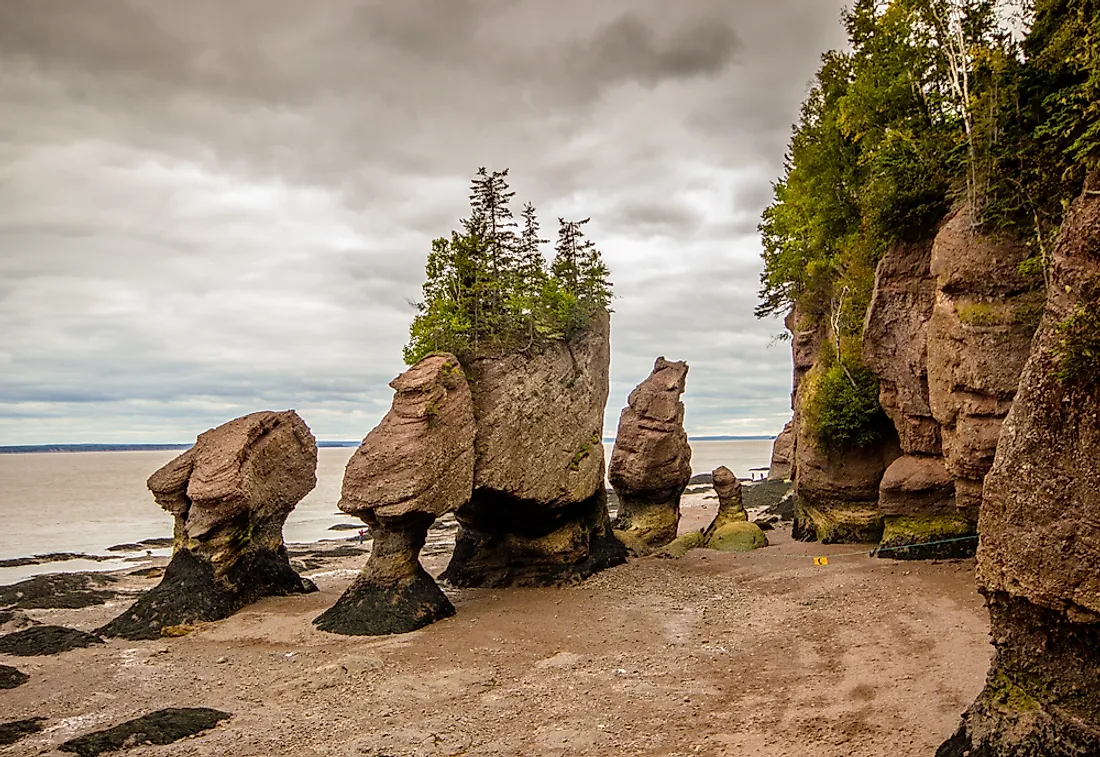What and Where Are The Hopewell Rocks?

The Hopewell Rocks are also known as the Flowerpots Rocks or The Rocks. They are found along the upper shores of the Bay of Fundy at Hopewell Cape. They are located within the Hopewell Rocks Park near other popular tourist attractions such as the Fundy Trail and Fundy National Park. Formed by coastal erosion, the rocks reach heights of 40 to 70 feet.
Formation of the Hopewell Rocks
The Bay of Fundy is known for having the highest tidal range in the world. Fundy has semidiurnal tides, meaning there are two highs and lows each day. During high tide, the water of the bay sits approximately 17 meter (55 feet) higher than at low tide. The advancing and retreating tides cover the base of the Hopewell rocks, and has resulted in significantly more erosion at the bottom than at the top, resulting in their unique appearance.
Tourism to the Hopewell Rocks
The Flowerpots Rocks are a popular tourist attraction at Hopewell Cape. Tourists are encouraged to remain within the park for a full day to be able to see the bay at both low and high tide, occurring about 6 hours apart. During low tide, tourists can walk along the exposed ocean floor. Return at high tide to see the areas you previously walked on under 55 feet of water! The time of each high and low tide changes each day so it is important to check the tide tables.
Plant and Animal Life
The large overlying sediment planes in the Fundy basin support a large number of animal and plant productivity. The Hopewell Rocks is one of the best areas to see migrating shorebirds with hundreds of thousands in the area from mid-July to mid-August. The birds use the Bay of Fundy as the sole stopping point on their 4,000-km southbound migration to feast on mud shrimp. Up to 75% of the Semipalmated Sandpiper population pass through the area. The nearby Grindstone Island is home to a large population of blue herons. Other birds seen in the area include merlins, peregrine falcons, osprey, bald eagles, cormorants, and eider ducks. In addition, mammals such as raccoons, porcupines, rabbits, red foxs, and coyotes, and larger mammals like black bears, white-tailed deer, and moose are spotted.
Elephant Rock
Elephant Rock, one of the most photographed of the Hopewell Rocks, partially collapsed on March on 14, 2016. About 100 to 200 tones of the rock calved off and fell the ground.











